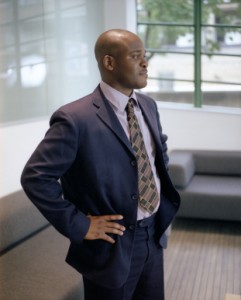Why Vulnerability is an Asset for Leaders
 When was the last time you felt vulnerable at work and how did you deal with it? Some leaders consider vulnerability to be a “worst case scenario” about how they show up during a situation. They think it is a sign of weakness. “You gotta stay strong and not let them see you sweat,” they might say. Or, “Suck it up and deal with it!”
When was the last time you felt vulnerable at work and how did you deal with it? Some leaders consider vulnerability to be a “worst case scenario” about how they show up during a situation. They think it is a sign of weakness. “You gotta stay strong and not let them see you sweat,” they might say. Or, “Suck it up and deal with it!”
Well, good news! Based on over ten years of research from Brene’ Brown, author of Daring Greatly: How the Courage to Be Vulnerable Transforms the Way we Live, Love and Parent, it turns out that the best leaders are vulnerable. Brown defines vulnerability as uncertainty, risk and emotional exposure. She holds up four myths about vulnerability that are important for all of us to consider as we move into the next stage of our life and leadership.
Myth 1: Vulnerability is a Weakness
Weakness is an inability to withstand attack or wounding. Brown found, after asking thousands of people to talk about times when they felt vulnerable, that it is actually our most accurate measure of courage. Vulnerability is owning something we have done wrong, starting a new job, moving forward after a loss, sharing an unpopular opinion, standing up for yourself, saying no, trying something new, holding yourself accountable, et cetera. What part of any of those examples sounds like weakness to you? “Vulnerability sounds like truth and feels like courage, and while truth and courage aren’t always comfortable, they’re never weak,” says Brown.
Myth 2: I Don’t Do Vulnerability
Vulnerability isn’t a choice – the only choice you have is how you’re going to respond when you’re confronted with uncertainty, risk, or emotional exposure. In other words, to be a leader is to be vulnerable – every single day! If you don’t believe that you “do” vulnerability, then vulnerability will “do” you. It shows up when you settle for something that you don’t really want because you didn’t dare stand up for what you did want.
Myth 3: Vulnerability Is Letting It All Hang Out
Vulnerability is about sharing your feelings and experiences with people who have earned the right to hear them. It is not over-sharing, or indiscriminate disclosure, and it’s certainly not celebrity-style social media information dumps. You don’t stand in front of your staff and say, “I don’t know what I’m doing and this is like a nightmare that won’t end!” You do, however, need to share those feelings with someone. Brown says that every successful leader she’s spoken to has a small group of people with whom they can say, “I’m in over my head.” But it’s a small group.
Myth 4: We Can Go It Alone
Going it alone is a value our society may hold in high esteem, but in reality, the vulnerability journey is not one that you make alone. You need support. You need folks that will let you try out new ways of being without judgment. You need a hand to lift you off the ground when you get knocked down. Brown says that she can go into an organization and tell within one hour how willing people are to be vulnerable. Part of it comes from listening to their language. They say things like, “I would appreciate your help here,” or “Thank you,” or “How ready are you to give it a shot?” Vulnerability can feel terrifying and dangerous, says Brown, “but not as terrifying and dangerous as getting to the end of our lives and asking, what would have happened if I’d shown up?”
What is speaking the loudest to you about vulnerability and these four myths? Where is a place that you are experiencing vulnerability right now and how do you best want to deal with that vulnerability, so that it’s an asset for you, rather than a liability?
By Vicky Dearing, PCC